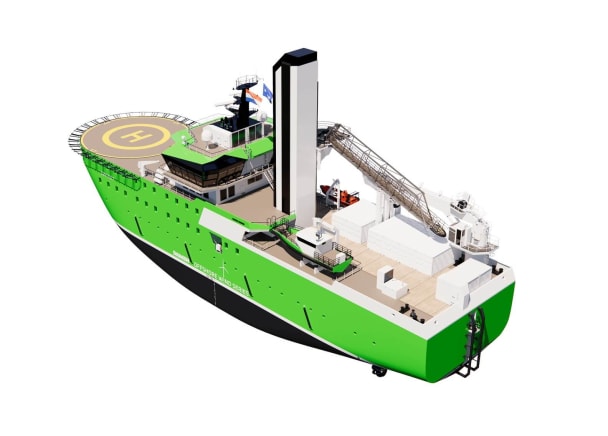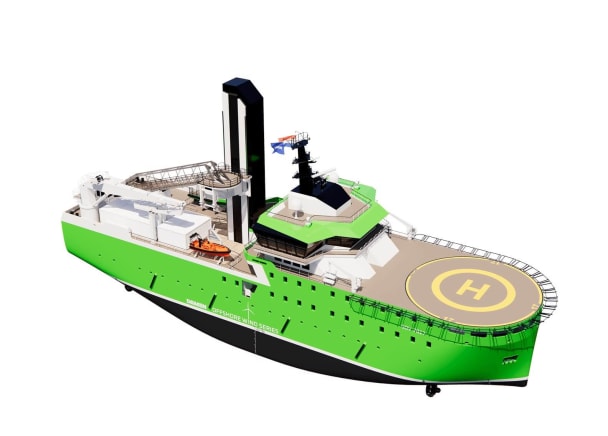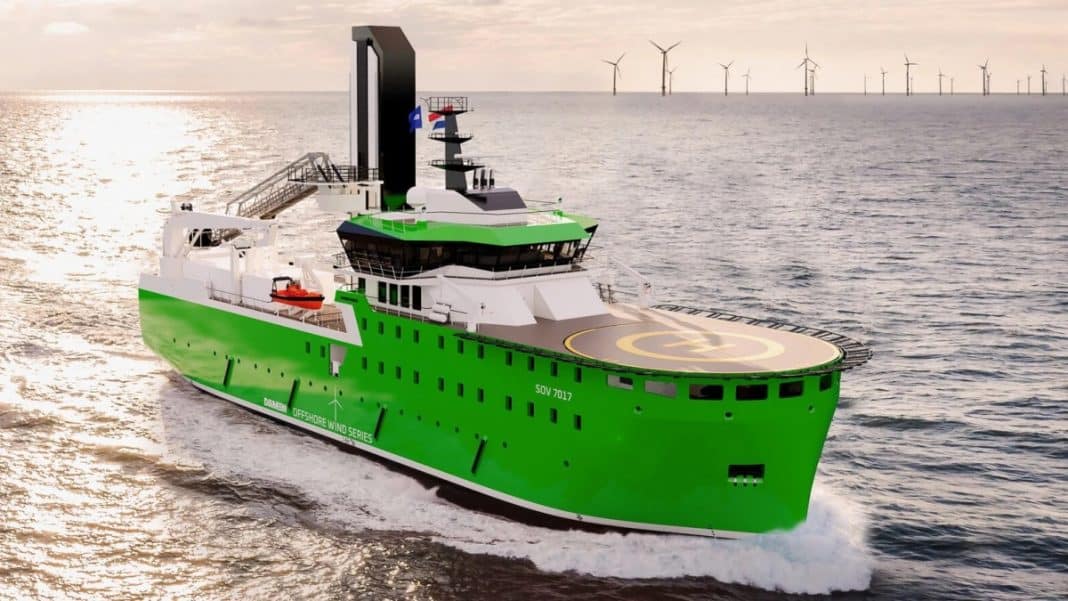With continuously growing energy demands, the need for renewable offshore wind energy is also on the rise. Currently, wind farms are maintained by technicians using Service Operations Vessels (SOVs). These SOVs serve as warehouses, workshops, transportation and accommodation for all the technicians onboard. In the areas where green energy is generated, these SOVs emit CO2, even though significant efforts are being made to reduce emissions and enhance vessel efficiency.
Damen is proposing a major advance towards achieving zero-emission wind farms with its concept design for a fully electric SOV. This novel class of offshore wind support vessel, based on Damen’s proven Service Operations Vessel (SOV) design, has been named the SOV E and will be the first large offshore vessel to operate fully electrically.
The electric SOV is for operations within wind farms and will be equipped with charging capabilities that will access electricity from suitably equipped turbines and offshore substations. Similar to the way that electric cars charge today. Enabling this comes with its own challenges, which Damen is enthusiastically tackling both within the group and through external partnerships.
Collaboration is key
For the SOV E concept to succeed collaboration is key. A high level of integration between wind farm operators, vessel owners, charging systems designers and Damen forms the foundation. The shared aim is to create a vessel that can not only remain in wind farms for extended periods of time, but also take full advantage of the abundant clean energy available locally to reduce emissions to virtually zero.
While still at an early stage, the concept has generated a lot of enthusiasm from wind farm developers and operators. The SOV E is a groundbreaking concept, with Damen’s research and development division undertaking extensive studies to ensure its technical and financial viability.

Behind the scenes
The premise that underlies the SOV E as an emissions-free vessel is that it will recharge its batteries once a day. This is feasible due to the nature of its operational profile, where it deploys technicians to the wind turbines and then loiters nearby until it is time to retrieve them. It will therefore generally have idling time in each 24-hour period, which can be used for recharging the vessel, using just a small part of the energy generated by the wind farm. This is one example of how the concept has been developed so that sailing 100% electric does not compromise its capabilities.
While the SOV E is capable of sailing entirely electrically, it will be equipped with diesel generators as backup. These will not only enable it to undertake alternative duties at any point in the future, they will also increase the operational flexibility of the vessel.
Electric technologies
The connection between the vessel and the turbine or offshore substation is pivotal. Damen is working with industry specialists to ensure that the charger connection is safe as well as being capable of charging the ship’s batteries very rapidly in all weather conditions.
Research is also being undertaken into ensuring that an emergency release is available in the event of immediate evacuation being required. The location for integrating this connection on the vessel has been carefully chosen to avoid compromising the large open deck area while benefiting from stable Dynamic Positioning (DP) capabilities.
With battery technology advancing at a rapid pace, the team is looking at what will be available that does not only meet their performance requirements but also their sustainability goals, in line with Damen Shipyards commitment to become a leader in this field. One of the aspects being studied is the chemical compounds of the batteries, the raw materials used to produce them, and their recyclability.

A worthwhile investment
Within the simulations set up by Damen, the business case plays a significant role. The differences in investment between the SOV E and the conventional diesel-electric SOV are being identified, including the additional investment required for charger systems within the wind park.
The operational costs of the SOV E will be substantially lower than those of a conventional SOV, taking into account the fuel price and the price per tonne of CO2. Various scenarios have been evaluated, all yielding positive business case results. As the cost of CO2 emissions continues to rise, the financial outlook becomes even more promising.
Closing the loop
The process of developing and identifying all necessary technologies to bring these vessels to reality continues. At Offshore Energy 2023 in November, Damen will officially launch the SOV E concept. We look forward to seeing you there!













